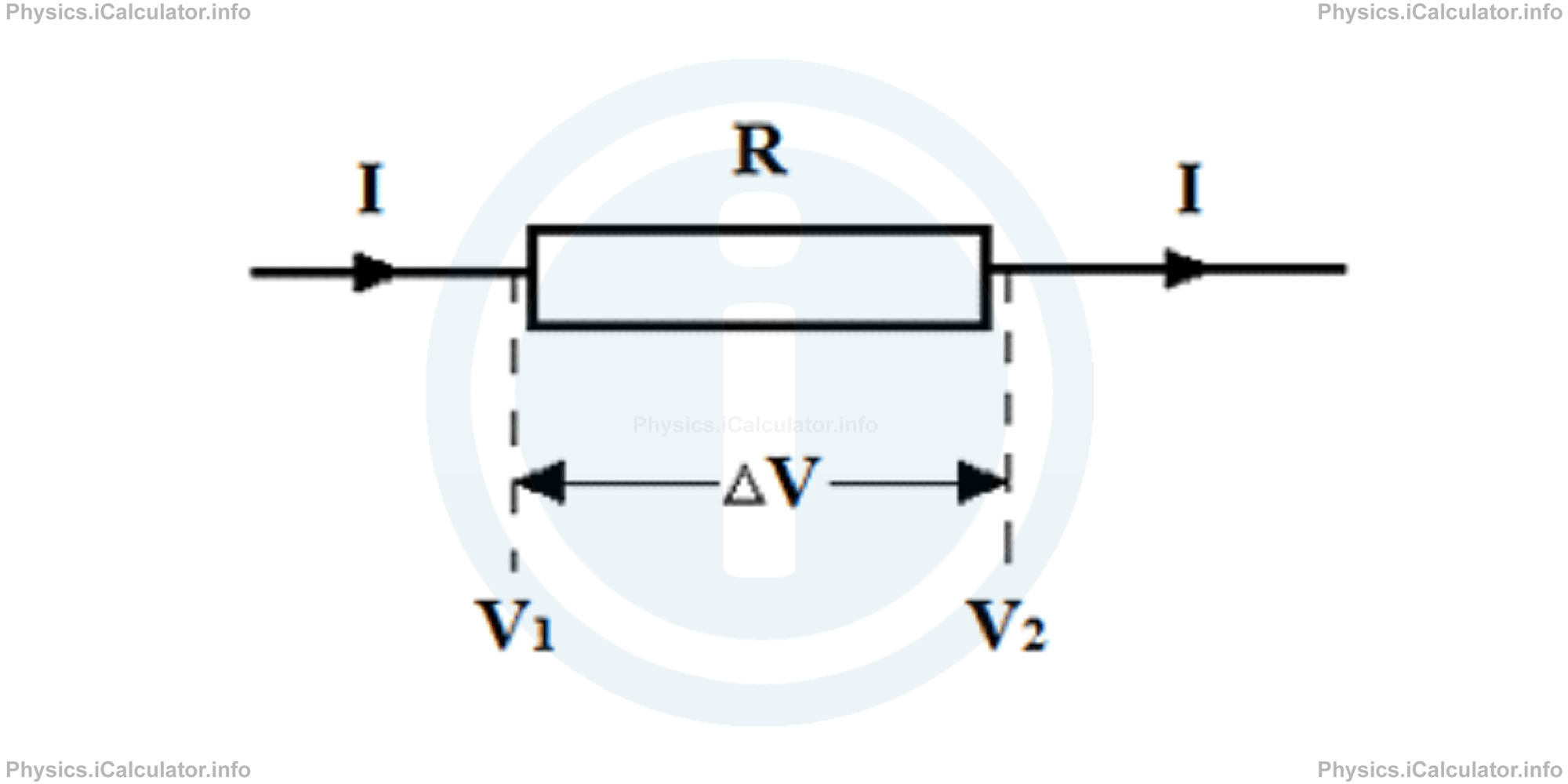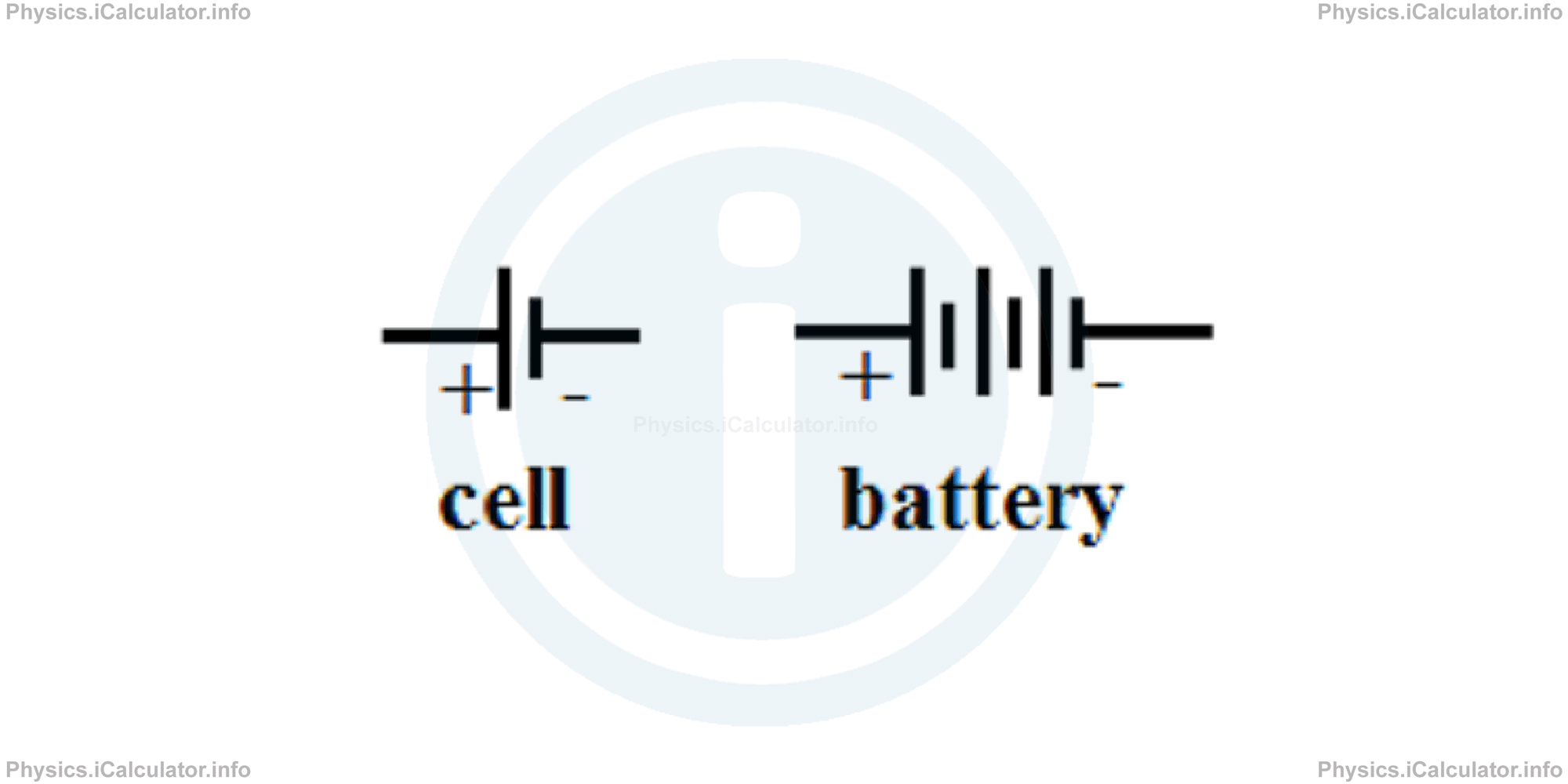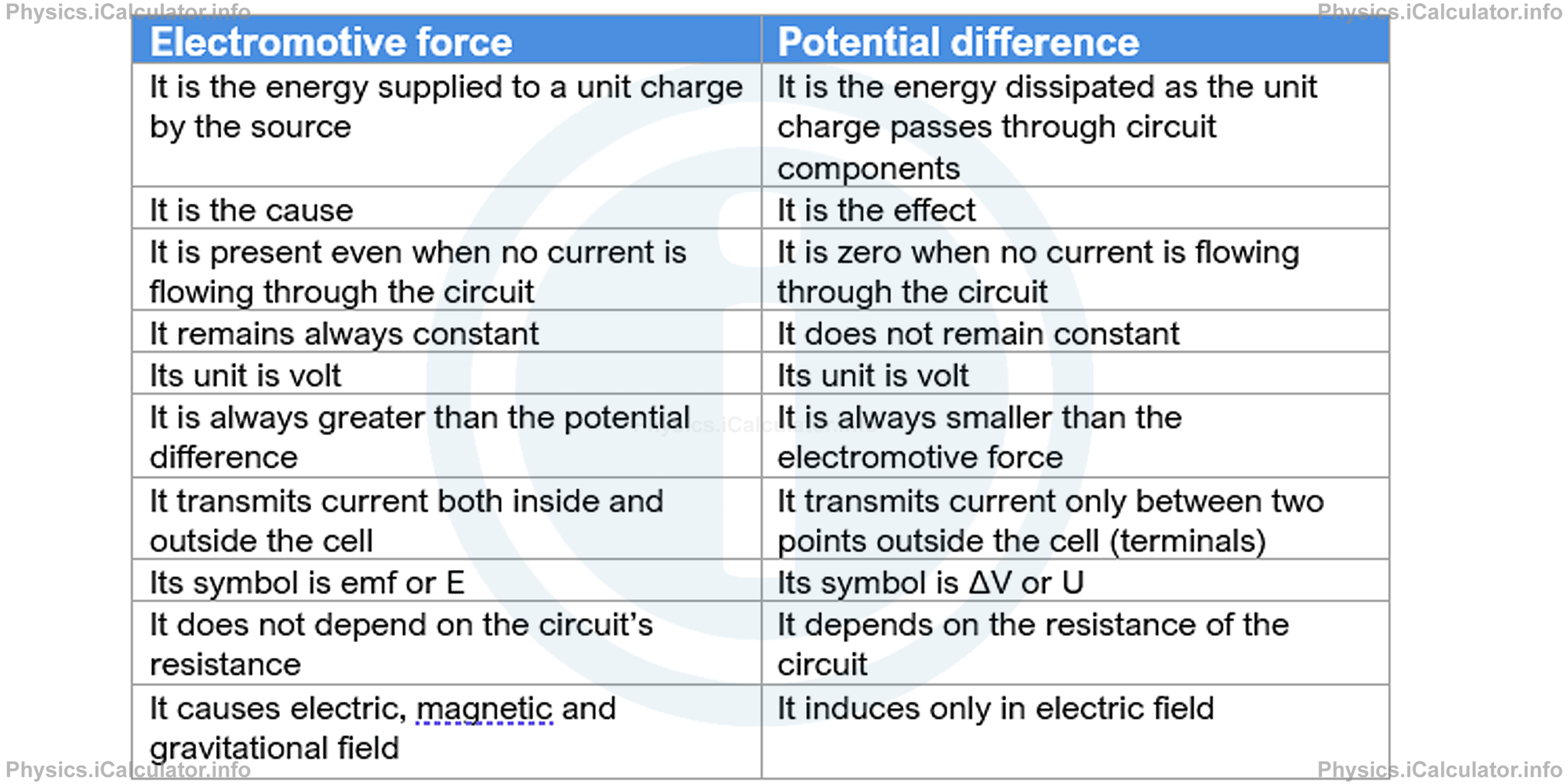Menu
Physics Lesson 15.3.2 - Potential Difference Produced by a Battery. Electromotive Force
Please provide a rating, it takes seconds and helps us to keep this resource free for all to use
Welcome to our Physics lesson on Potential Difference Produced by a Battery. Electromotive Force, this is the second lesson of our suite of physics lessons covering the topic of Electric Potential Difference (Voltage). Ohm's Law, you can find links to the other lessons within this tutorial and access additional physics learning resources below this lesson.
Potential Difference Produced by a Battery. Electromotive Force
In simple words, potential difference is a change in the charges ability to do work in two different positions of the circuit. Usually, one of these positions is the initial part (input) of any electrical appliance installed in the circuit while the other position is the ending part (output) of the same appliance. In many cases, we assume all appliances as resistors. The potential difference in a circuit is also known as voltage.

Electric charges flow from places of higher potential in places of lower potential. This flow stops when the potential is balanced.
This potential difference is not casual; rather, it is produced by an electric source such as a battery or an electric outlet. Here, we will focus only on the battery, as it produces direct current, which is a one-directional current (it flows in one direction only).
We say a battery is a source of electricity but not because it generates free electrons; rather, a battery simply pushes the electrons of the conducting wire by making them flow throughout the circuit. As a result, a potential difference between the terminals of the battery is produced, which is the main factor that causes the flow of charges throughout the circuit. Without this potential difference, no charge would flow through the circuit, regardless the number of free charges available.
A battery is composed by two or more cells. A cell is a single unit device, which converts chemical energy into electric energy. A battery usually consists of a group of cells as shown in the figure below.

Henceforth we will use the symbol of cell to represent an electric source when dealing with electrical circuits.
By definition, electromotive force (emf) is the energy supplied to the unit charge by a cell or battery (electric source).
Mathematically, we have
There is a close similarity between the concepts of potential difference and electromotive force, as both are calculated by dividing energy and charge. (Also, they are both measured in Volts). However, there is a crucial difference between these two concepts. Electromotive force exists only at the source; it represents the maximum potential difference a battery can generate while potential difference can be calculated between any two points of the circuit (usually between the extremities of an electric consumer - a resistor for example - installed in the circuit. Numerically, electromotive force is greater than the actual potential difference as electromotive force represents the maximum potential difference possible.
A number of features for electromotive force and potential difference are given in the table below. In this way, you will be able to understand better the difference between these two concepts.

Let's elaborate further some of the above features. Thus, emf exists even no current is flowing through the circuit as it is an intrinsic feature of the source. For example, a cell has a pre-defined emf = 1.5 V (you can see this value stamped on the back of a cell). However, when the circuit is OFF (open), there is no potential difference between the extremities of a circuit component as no current is flowing through it.
Another feature that requires explication is the fourth one. Emf is always constant (it is pre-defined since the cell has been produced in factory), while potential difference varies in dependence of how many electrical components we have connected in the circuit.
Last, we will discuss in the future chapters the interaction between gravity, electricity and magnetism. Such interactions involve the electromotive force of the source but not the potential difference of various circuit components.
Example 2
A 1.5 V cell causes a 0.3 C of charge to flow through a circuit. What is the heat energy dissipated by a resistor connected in this circuit if 80% of energy produced by the battery is converted into heat by the resistor?
Solution 2
First, we calculate the electric energy produced by the battery. This represents the total energy in the circuit (Wsource). Thus, we write
Wsource = emf ∙ Q
= 1.5 V ∙ 0.3C
= 0.45 J
Only 80% of this amount is converted into heat by the resistor. Therefore, we have
= 0.80 ∙ 0.45 J
= 0.36 J
As you see, this is a very small value; it means that it is not a good idea to use a cell as an electric source to supply a resistor with energy.
You have reached the end of Physics lesson 15.3.2 Potential Difference Produced by a Battery. Electromotive Force. There are 4 lessons in this physics tutorial covering Electric Potential Difference (Voltage). Ohm's Law, you can access all the lessons from this tutorial below.
More Electric Potential Difference (Voltage). Ohm's Law Lessons and Learning Resources
Whats next?
Enjoy the "Potential Difference Produced by a Battery. Electromotive Force" physics lesson? People who liked the "Electric Potential Difference (Voltage). Ohm's Law lesson found the following resources useful:
- Battery Feedback. Helps other - Leave a rating for this battery (see below)
- Electrodynamics Physics tutorial: Electric Potential Difference (Voltage). Ohm's Law. Read the Electric Potential Difference (Voltage). Ohm's Law physics tutorial and build your physics knowledge of Electrodynamics
- Electrodynamics Revision Notes: Electric Potential Difference (Voltage). Ohm's Law. Print the notes so you can revise the key points covered in the physics tutorial for Electric Potential Difference (Voltage). Ohm's Law
- Electrodynamics Practice Questions: Electric Potential Difference (Voltage). Ohm's Law. Test and improve your knowledge of Electric Potential Difference (Voltage). Ohm's Law with example questins and answers
- Check your calculations for Electrodynamics questions with our excellent Electrodynamics calculators which contain full equations and calculations clearly displayed line by line. See the Electrodynamics Calculators by iCalculator™ below.
- Continuing learning electrodynamics - read our next physics tutorial: Electric Circuits. Series and Parallel Circuits. Short Circuits
Help others Learning Physics just like you
Please provide a rating, it takes seconds and helps us to keep this resource free for all to use
We hope you found this Physics lesson "Electric Potential Difference (Voltage). Ohm's Law" useful. If you did it would be great if you could spare the time to rate this physics lesson (simply click on the number of stars that match your assessment of this physics learning aide) and/or share on social media, this helps us identify popular tutorials and calculators and expand our free learning resources to support our users around the world have free access to expand their knowledge of physics and other disciplines.
Electrodynamics Calculators by iCalculator™
- Amount Of Substance Obtained Through Electrolysis Calculator
- Charge Density Calculator
- Electric Charge Stored In A Rc Circuit Calculator
- Electric Field In Terms Of Gauss Law Calculator
- Electric Power And Efficiency Calculator
- Electron Drift Velocity Calculator
- Equivalent Resistance Calculator
- Force Produced By An Electric Source Calculator
- Joules Law Calculator
- Ohms Law Calculator
- Potential Difference In Rc Circuit Calculator
- Resistance Due To Temperature Calculator
- Resistance Of A Conducting Wire Calculator